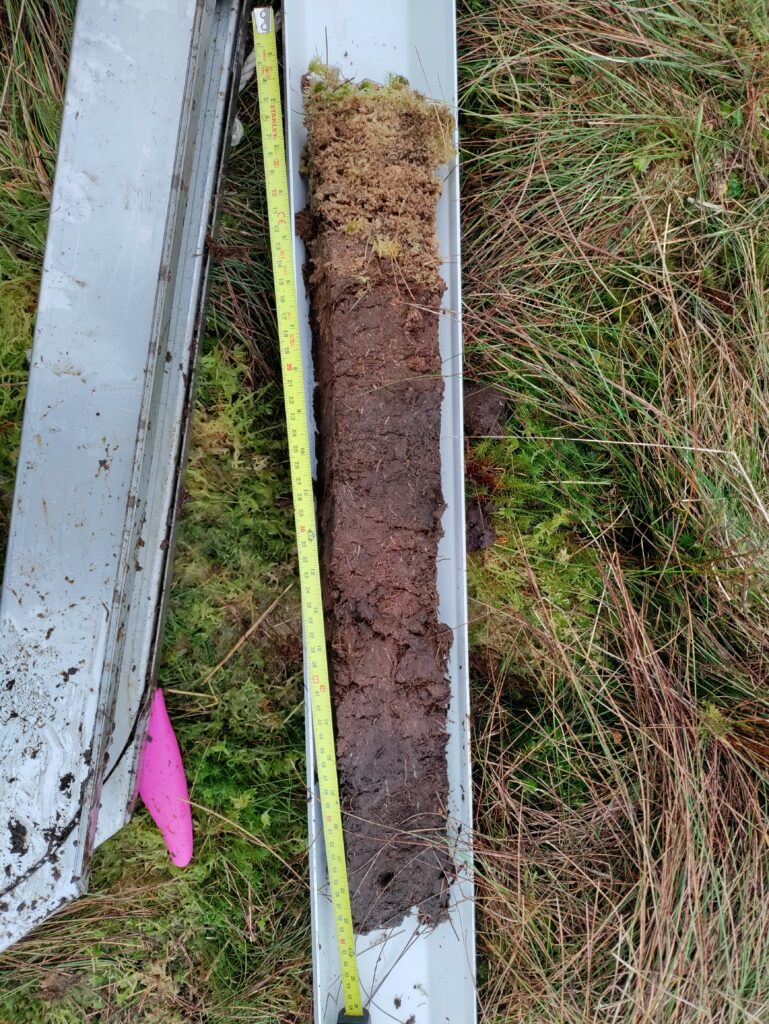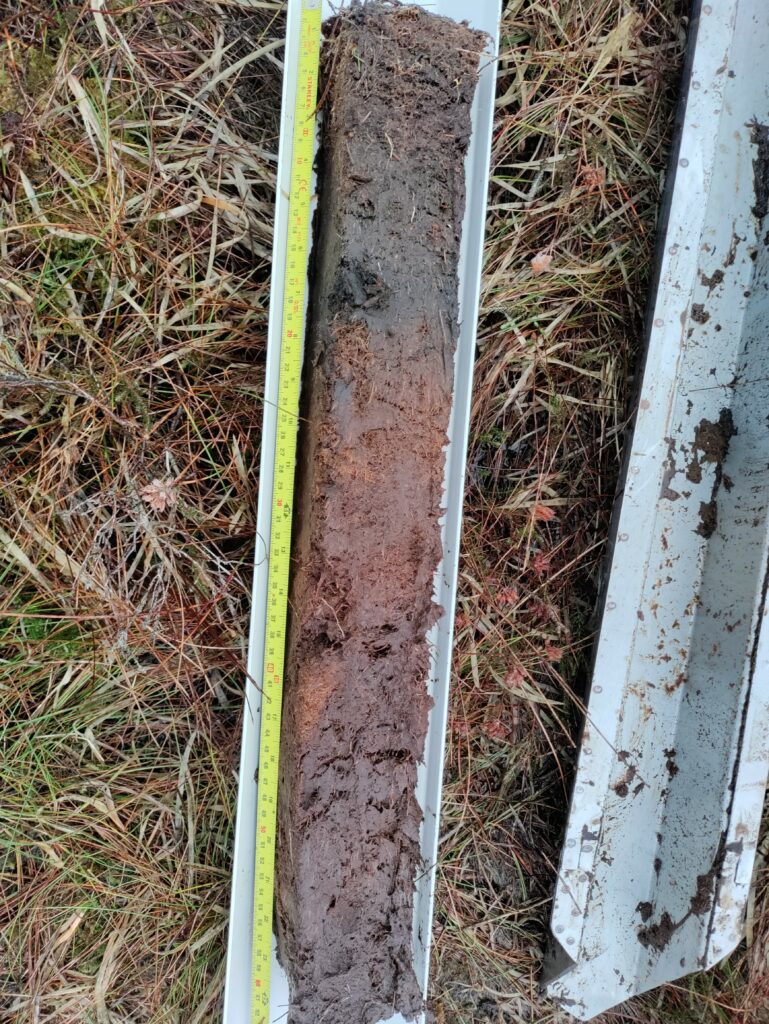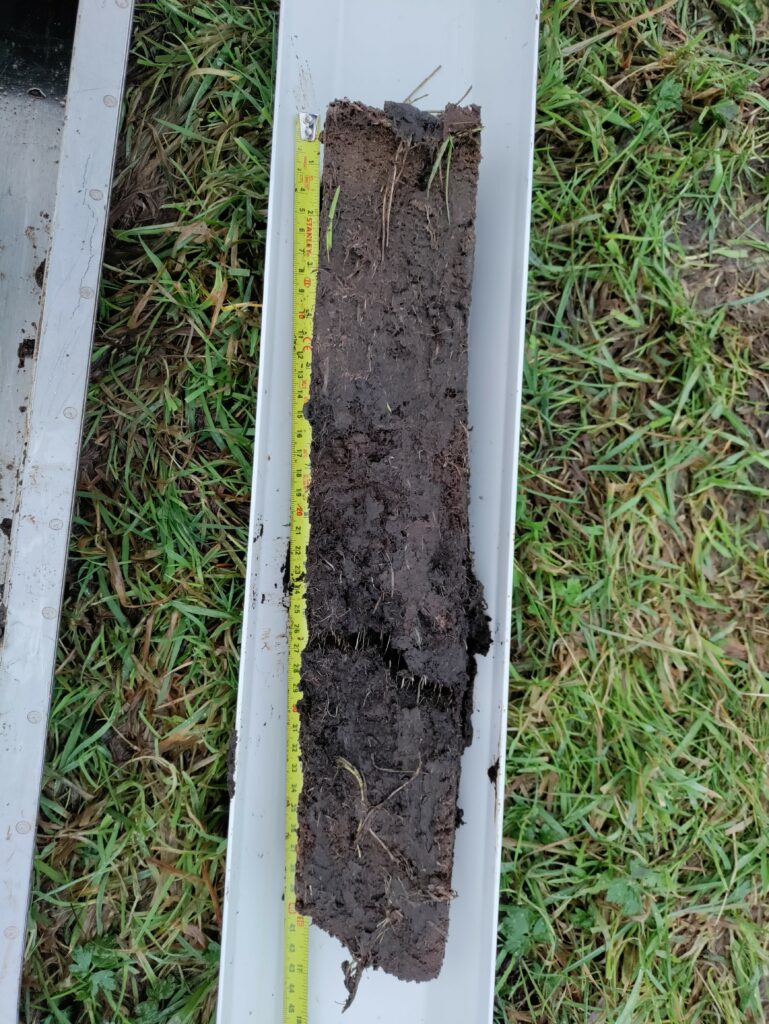Investigating Carbon Accumulation over the past 500 years
Queens University researchers from the School of Natural & Built Environment, Dr Maarten Blaauw a paleo-ecologist and PhD student Gosse Bootsma visited the CAFRE Hill Farm in December 2021 to cut samples from peatland as part of an investigation into the Carbon accumulation in peatland over the past 500 years. Paleo-ecologists use carbon dating, bulk density and vegetation remnants to analyse for ecotope and peat accumulation levels.

Relatively intact moor which is naturally drained by peat pipes and has open drains every 60m. Surface vegetation plot analysis indicates 30-40% Sphagnum coverage.


